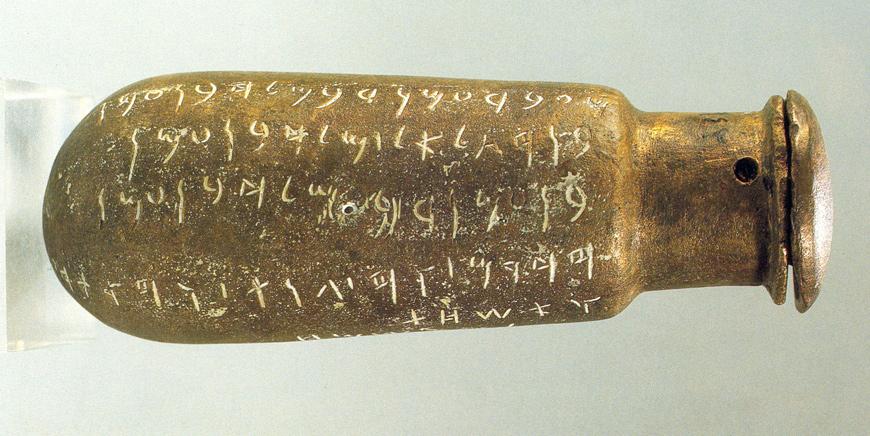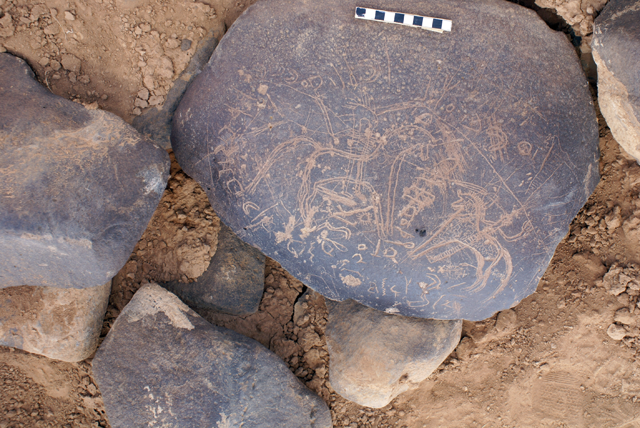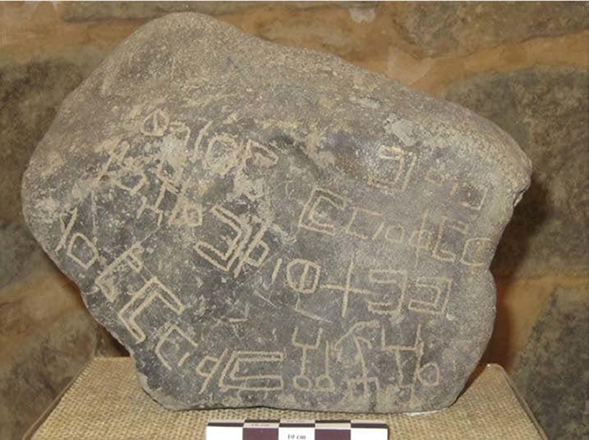You are here
Scholar presents differences between ‘Arabian, Arabia and Arabic’
By Saeb Rawashdeh - Apr 30,2018 - Last updated at Apr 30,2018

Tall Siran Ammonite inscription (Photo by Juergen Liepe)
AMMAN — The German Protestant Institute of Archaeology recently held the second lecture of a series dubbed "Epigraphic Testimonies from Jordan and Beyond", where Dean of the Faculty of Archaeology and Anthropology of Yarmouk University Hani Hayajneh spoke about the Arabian pre-Islamic scripts.
In ancient history, north Arabia (of which modern Jordan is part) was located between two major powers of the Near East, Mesopotamia and Egypt, the scholar said, noting that the region enjoyed a strategic and commercial position which forced the great powers to consider the inhabitants of the area in their policies.
The discovery of the ancient North Arabian inscriptions at the end of the 19th century opened a new era for the history of ancient Arabian culture and languages, Hayajneh said, underscoring the differences between the terms Arabian, Arabia and Arabic.
While the first two refer to the region where non-Arabs dwelled, the third one is directly linked to Arabs as an ethnic group.
“The increase of epigraphical and archaeological surveys along with technological development implemented for documentation purposes, allowed scholars to come up with new theories and ideas that shed light on vague and opened questions," Hayajneh explained.
Arabia in general witnessed the beginning of a literate culture around the 10th century BC, the epigrapher said, distinguishing between four ancient North Arabian epigraphical groups: Thamudic, Liyanite, Safaitic and Hasanitic inscriptions.
“The name Thamudic was given because of the occurrence of the tribal name in some inscriptions and, accordingly, to denote a widely spread epigraphical type of the northern parts of Saudi Arabia and southern Jordan,” Hayajneh pointed out, adding that the Safaitic, which constitute the largest group, is also the most extensive in terms of the huge number of inscriptions.
It was spread across the volcanic desert of north Arabia — located in parts of Syria, eastern Jordan and Saudi Arabia, he elaborated, noting that Safaitic is derived from the geographic name Safā which lies southeast of Damascus.
For its part, the Hasaitic group was named after Al Hasa region in northeastern Arabia at the sites of Al Qafñf and Thaj, the professor noted.
Meanwhile, the term “Old Arabic” comprises texts that refer to pre-Islamic times, while the Islamic periods witnessed varieties of Arabic: middle, classical, modern standard and spoken dialects, Hayajneh added.
“It is worth mentioning that the described classification is not rigid in terms of geographical distribution of the epigraphical groups,” the scholar stated, adding that some inscriptions have been found far away from their place of origin.
“Pre-Islamic north Arabia can be considered as a speech community in which different ancient North Arabian dialects and other languages used to exist and sometimes overlaid each other,” Hayajneh concluded.
Related Articles
AMMAN — Allat was a pre-Islamic Arabian goddess worshipped alongside Uzza, Manat and Dushara.
AMMAN — Although it is clear that the eastern parts of Jordan are arid areas, the area of the basalt desert is full of inscriptions and engr
AMMAN — The Safaitic script belongs to the group of South Semitic scripts and was used by Arabs in southern Syria, northern Jordan and the a














